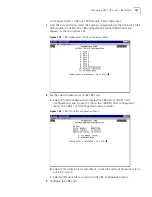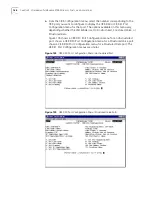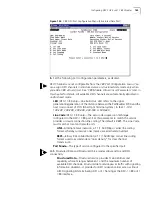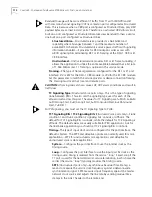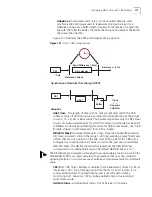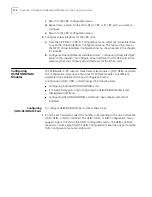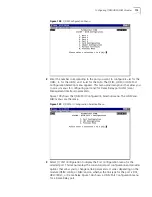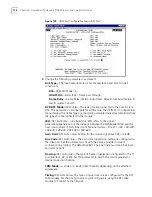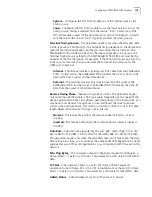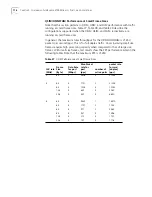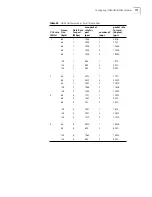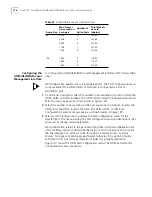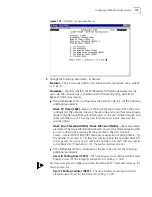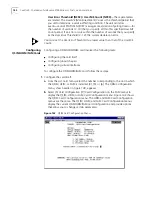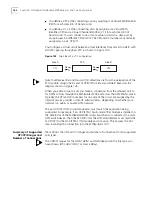
Configuring Virtual Circuits
181
c
If the
Admin Status
of the card is
In Service
, select
[1] Set Admin. Status
and
enter
[1]
to take the serial card out of service.
You must take the card out of service before you can change any configuration
settings.
d
Set the following parameter as desired:
Max. Frame Size
—The maximum frame size supported by the serial card:
2KB
,
4KB
, or
8KB
. This value must match the maximum frame size for the device
interface to which the PathBuilder S700 is being connected. For example, if the
maximum frame size being transmitted to the PathBuilder S700 QSIM from a
Frame Relay Access Device (FRAD) is
4KB
, then you must set the
Maximum Frame
Size
for the QSIM/HSIM card to
4KB
.
If you change the
Max. Frame Size
setting, you will have to reset the card.
For information about QSIM, HSIM, and FAM performance at small frame sizes,
see “QSIM/HSIM/FAM Performance at Small Frame Sizes” earlier in this section.
e
Return to the QSIM, HSIM, or FAM Configuration menu.
2
Configure input shapers for the QSIM/HSIM/FAM card.
a
Select
[6] Shaper Configuration
(
[10] Shaper Configuration
on the FAM menu)
to open the QSIM, HSIM, or FAM Shapers screen. This screen is the same as the
MCPU Shapers screen, shown earlier in this chapter in Figure 88.
b
Set the following input shaper parameters for the QSIM, HSIM, or FAM card:
n
Peak Cell Rate (PCR)
n
Sustained Cell Rate (SCR)
n
Maximum Burst Size (MBS)
For detailed instructions about configuring input shapers, see “Configuring
Input Shapers” earlier in this chapter.
c
Return to the QSIM, HSIM, or FAM Configuration menu.
3
Configure virtual interfaces for the QSIM, HSIM, or FAM card.
a
Select
[7] Virtual Interfaces
(
[11] Virtual Interfaces
on the FAM menu) to open
the QSIM, HSIM, or FAM Virtual Interfaces Configuration menu. This menu is
the same as the MCPU Virtual Interfaces menu, shown earlier in Figure 84.
b
Configure virtual interfaces as described under “Configuring Virtual Interfaces”
earlier in this chapter. You configure virtual interfaces for the QSIM, HSIM, or
FAM card in the same way that you configure virtual interfaces for the MCPU
card.
Configuring Virtual
Circuits
Once you have configured the PathBuilder S700’s modules and ports, you can start
setting up virtual circuits. A virtual circuit is a bidirectional path between data ports
of connecting ATM units. You should have a circuit plan developed in advance.
The PathBuilder S700 supports both VPCs (virtual path connections) and VCCs
(virtual channel connections). A virtual path is an aggregate collection of virtual
channels for the purpose of assigning the channels to a single physical layer. A
virtual channel is a connection between data ports.
Summary of Contents for 3C63400-3AC-C - PathBuilder S700 Switch
Page 14: ...xiv CHAPTER SUPPLEMENTARY REGULATORY INFORMATION ...
Page 18: ...4 ABOUT THIS GUIDE ...
Page 28: ...14 CHAPTER 1 SYSTEM DESCRIPTION ...
Page 88: ...74 CHAPTER 3 GETTING STARTED ...
Page 260: ...246 CHAPTER 6 PATHBUILDER S700 DIAGNOSTICS AND PERFORMANCE MONITORING ...
Page 270: ...256 INDEX ...

